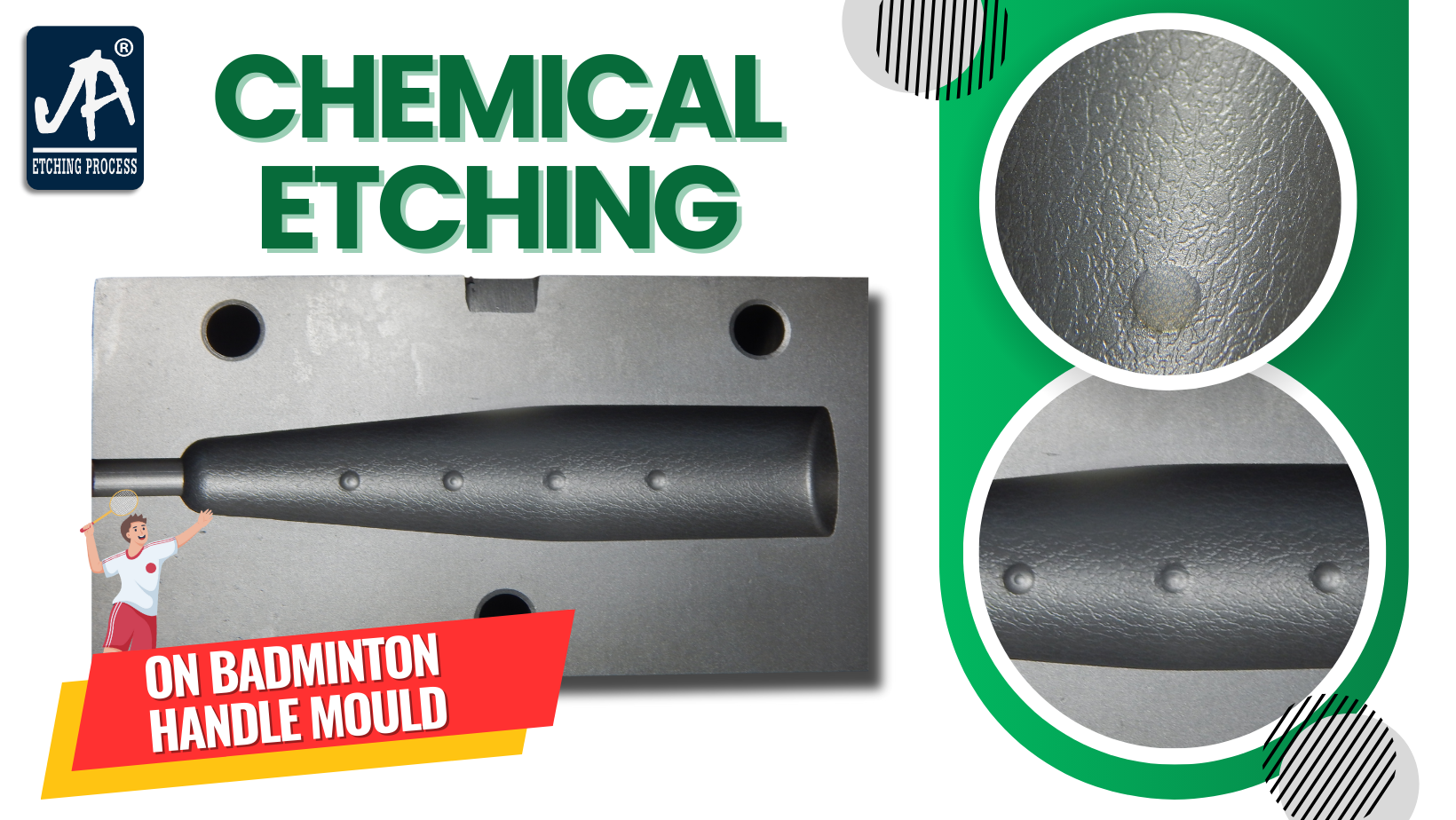Crafting Grip: Elevating Badminton Moulds with Chemical Etching
In the fast-paced world of badminton, every player knows the importance of a secure grip on their racket. The handle mould plays a crucial role in providing comfort and control during intense rallies. Today, we delve into the intricate process of crafting grip on badminton moulds, exploring how chemical etching techniques enhance the functionality and performance of these essential components.
Understanding the Importance of Grip:
- The Role of Handle Moulds: Handle moulds serve as the foundation of a player’s grip on their badminton racket. A well-designed handle provides stability, comfort, and control, allowing players to execute their shots with precision and confidence.
- Enhancing Performance: Grip is essential for maximizing performance on the badminton court. A secure grip allows players to generate power, control the direction of their shots, and maintain consistency in their game. As such, crafting the perfect grip on handle moulds is essential for players of all levels.
Chemical Etching: A Precision Crafting Technique:
- Precision Detailing: Chemical etching is a highly precise technique used to create intricate patterns and textures on metal surfaces. Unlike traditional engraving methods, which involve physical cutting or abrasion, chemical etching selectively removes material from the surface using chemical reactions, resulting in precise and detailed designs.
- Tailored Grip Patterns: Chemical etching allows for the creation of custom grip patterns on badminton handle moulds. Manufacturers can tailor the texture and depth of the etching to meet the specific preferences of players, ensuring a grip that feels comfortable and secure in their hands.
Elevating Grip with 5-Axis Laser Texturing:
- Unparalleled Precision: 5-axis laser texturing is a cutting-edge technology that offers unparalleled precision in creating intricate patterns and textures on mould surfaces. Unlike chemical etching, which relies on chemical reactions, laser texturing uses a computer-controlled laser beam to selectively remove material from the surface, resulting in highly precise and uniform designs.
- Versatility in Design: With 5-axis laser texturing, manufacturers have virtually limitless design options for crafting grip on badminton moulds. Whether it’s replicating the texture of natural materials like wood or adding intricate patterns inspired by traditional craftsmanship, laser texturing offers unmatched versatility in design.
Combining Techniques for Optimal Results:
- Synergy of Techniques: By combining chemical etching and 5-axis laser texturing techniques, manufacturers can achieve optimal results in crafting grip on badminton moulds. Chemical etching provides customization options and fine detail, while laser texturing offers precision and uniformity, resulting in handle moulds that are both functional and aesthetically pleasing.
- Customization and Personalization: The synergy of these techniques allows for extensive customization and personalization of grip patterns on badminton moulds. Players can choose from a wide range of designs and textures to create a handle that reflects their individual style and preferences, enhancing their connection to their racket.
Conclusion:
In conclusion, crafting grip on badminton handle moulds is a meticulous process that requires precision and attention to detail. Chemical etching and 5-axis laser texturing techniques offer innovative solutions for enhancing grip functionality and performance. By leveraging these advanced techniques, manufacturers can create handle moulds that provide players with the comfort, control, and confidence they need to excel on the badminton court. Whether it’s through custom grip patterns or personalized designs, the art of crafting grip elevates badminton moulds to new heights of functionality and aesthetics.


